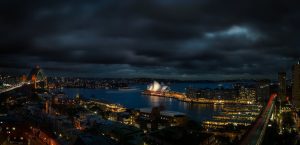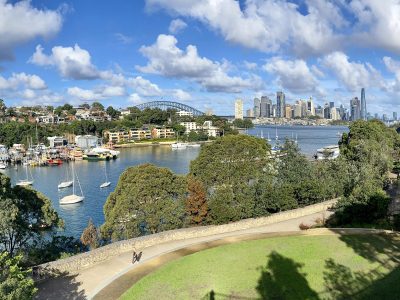Protection For Sydney Harbour: Berrys Bay Case
A legal decision of great significance related to the protection of the natural heritage of Sydney Harbour has recently been made in a judgment by the Chief Judge of the NSW Land and Environment Court (Preston, CJ). The case involved a proposal to moor and use a floating dry dock in Berrys Bay located near the Harbour Bridge (Stannards Marine Pty Ltd v North Sydney Council 2002 NSW LEC 99 (8 August 2022)). His findings interest me from two perspectives; first in my current role as chair of a committee reviewing aspects of waterway health for Greater Sydney Harbour under the NSW Coastal Management Program (for details see Sydney Coastal Councils Group website); and two, my general interest in the application of the Public Trust Doctrine (PTD) in coastal management.
The judgment makes explicit use of Chapter 10 of the Biodiversity and Conservation SEPP and the Foreshores and Waterways Area DCP that deals with Sydney Harbour. These planning instruments contain provisions giving legislative recognition to the concept of the public trust and the principle of intergenerational equity They are forms of delegated legislation, being made under the NSW Environment Planning and Assessment Act.
As stated by Preston: Chapter 10 of the B&C SEPP recognises “the catchment, foreshores, waterways and islands of Sydney Harbour” as the corpus of a public trust. The principal aim with respect to the Sydney Harbour Catchment recognises these natural elements of Sydney Harbour to be “an outstanding natural asset” (cl 10.1(1)(a)(i) and “a public asset of national and heritage significance” for existing and future generations (cl 10.1(1)(a)(ii)). The Foreshores and Waterways Area DCP gives effect to this principal aim (section 1.1). Chapter 10 of the B&C SEPP adopts the principles for the purpose of enabling the aims to be achieved in relation to the Foreshores and Waterways Area. These principles recognise Sydney Harbour as “a public resource, owned by the public, to be protected for the public good” (cl 10.1(2)(a)); “the public good has precedence over the private good whenever and whatever change is proposed for Sydney Harbour and its foreshores” (cl 10.1(2)(b)); and “protection of the natural assets of Sydney Harbour has precedence over all other interests” (cl 10.1(2)(c)). These aims and principles encapsulate the idea of public trusteeship of Sydney Harbour.
The Judge notes how the concept of the public trust has been invoked in cases concerning proposed activities in, or change of, natural harbours. He cites jurisprudence from the USA, Hong Kong and even cases from Sydney Harbour. His summary of these cases is worth reading as it identifies the values attached to a natural harbour setting. For instance, he quotes Briscoe J of the NSW L&E Court in Addenbrooke Pty Ltd v Woollahra Municipal Council who recognised that “Sydney Harbour is one of the most beautiful harbours in the world. It provides pleasure not only to local residents and mariners but to many visitors from Australia and abroad”.
But what I really find meaningful is that Preston returned to the wording from what Tim Bonyhady and others consider to be one of Australia’s most important expositions of the PTD (see Thom, 2012, Macq. J. Int. and Comp. Envir. Law, 21). This dealt with mining leases over foreshores from Mosman to Bradleys Head. They are worth repeating here (NSW Land Appeal Court in Re Sydney Harbour Collieries Co, 1895, 5 Land Appeal Court Reports 243). The judgment recognised the duty of the government, as trustee, to protect the public asset of Sydney Harbour:
“…It would be the duty of the Government not only to take the greatest care to protect both present and contingent public interest, but also to obtain the best consideration for the temporary alienation of frontages which, if the Crown would be in law a trustee, it holds in trust for the health, recreation, and enjoyment of an enormous and ever-increasing population”.
And going on with great foresight in 1895:
“In the next place, the rapid expansion of the metropolis on the south and north shores of the harbour, coupled with the fact that although the extension of the city landward is practically unlimited, the foreshores and waterways cannot be correspondingly extended, affords a very strong reason for refusing this lease. In the course of a generation, the population of Sydney and its suburbs will probably exceed 500,000, and in two generations some 700,000 or 800,000. That is a fact which would rather suggest the resumption of the foreshores than their alienation, unless in very exceptional circumstances when some imperious and paramount public purpose must be satisfied at any cost. But no consideration in the nature of rent could afford any compensation or consolation for the disfigurement of a harbour which we have all been taught to cherish as one of nature’s choicest masterpieces”.
Preston also links the concept of the public trust to the principle of intergenerational equity, one of the principles of “ecologically sustainable development” (or ESD; see s 6(2)(b) of the NSW Protection of the Environment Administration Act 1991(POEA Act)). He cites several legal scholars on the relationship between the concept of the PTD and the principle of intergenerational equity by saying that the public trust has been described as the strongest contemporary expression of the idea that the legal rights of nature and of future generations are enforceable against contemporary users. This leads him back to Chapter 10 of the Biodiversity and Conservation SEPP.
He argues that this SEPP recognises the need to afford intergenerational equity. In his words: “An essential aim is to ensure the catchment, foreshores, waterways and islands of Sydney Harbour are “protected, enhanced and maintained “not only as “an outstanding natural asset” but also as “a public asset of national and heritage significance”, “for existing and future generations” (cl 10.1(1)(a)(ii)). The language of this aim accords with the premise of intergenerational equity that the present generation is to ensure the health, diversity and productivity of the environment is maintained or enhanced for future generations…. As I have earlier explained, the identification of Sydney Harbour as a “public asset” with “national and heritage significance” recognises its status as a community asset available to be used and enjoyed by all the people of Australia but also that it is inherited as a legacy from previous generations and is to be transmitted from the existing generation to future generations. To protect, maintain and enhance Sydney Harbour as an outstanding natural asset and as a public asset of national and heritage significance is to implement each of the principles of conservation of options, conservation of quality and conservation of access for the benefit of future generations”.
This judgment comes at an opportune time. Preston has again given prominence to public rights as he did in his 2018 judgment at Belongil Beach in which I was involved (see Sack et al. 2020 EPLJ 37,128). In applying the concept of PTD and principle of intergenerational equity, the 2022 Berrys Bay case should contribute to future plans to maintain and improve the waterway health of our great Harbour and its catchment as defined in Chapter 10 of the B&C SEPP.
Bruce Thom
Words by Prof Bruce Thom. Please respect the author’s thoughts and reference appropriately: (c) ACS, 2022. For correspondence about this blog post please email admin@australiancoastalsociety.org.au
#223



 Coastal Inundation: A Hazard Not to be Underestimated
Coastal Inundation: A Hazard Not to be Underestimated